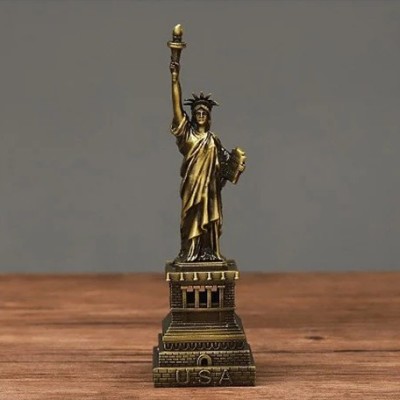
spectator.org
Adam Smith Is a Better Economist Than Donald Trump
If you put 50 randomly selected American academic economists in a room and ask them what they thought of raising tariffs as a way of increasing economic growth, I bet at least 48 of them would say that is a bad idea. That is amazing because I cannot think of ANY other major economic policy issue on which economists have such near-unanimous views. For example, if you ask those 50 randomly selected economists should the Fed lower, raise, or leave constant interest rates now to stimulate the economy, I expect you would get all sorts of different answers.
As an economic historian, I am acutely aware that the 250-year-long move towards greater material abundance beginning in earnest with the British Industrial Revolution was also generally accompanied by an abandonment of the high tariff-mercantile regime that previously dominated. Adam Smith’s Wealth of Nations (1776) is still appropriately considered the first great work in modern economics.
Smith understands that people and geographic areas have different abilities in producing goods and services, and individuals should generally do what they do best, selling most of their output and, in return, buying things from others that they cannot themselves make easily or cheaply. Smith thus realized that a division of labor induced by trade could lead to higher output and that barriers to trade, like tariffs, had a stultifying economic impact. By 1860, England was the world’s richest nation and was essentially tariff-free.
My most important scholarly work relates to a large extent to the domestic causes of the Great Depression of the 1930s. Like many economists, I believe that one key factor (although not the only one) was the high tariff policy of the United States, exemplified by the 1930 Smoot-Hawley Tariff whose passage in the House in the spring of 1929 presaged by a few months the stock market crash beginning the Great Depression.
By contrast, the lowering of tariffs rather continuously from 1934 onward contributed to nine decades of worldwide economic growth, exemplified by such things as the 1994 North American Free Trade Agreement (NAFTA) between the U.S. and neighboring Canada and Mexico, and the earlier creation of a massive tariff-free zone in Europe now known as the European Union. (RELATED: The New NAFTA Is Exporting the Same Old Bad Habits)
The flexing of American muscle, integral to the American First political philosophy of Donald Trump, can be accomplished in numerous ways, including raising or threatening to raise tariffs. Important in promoting that idea discredited by nearly all mainstream economists with Trump has been Peter Navarro, part of the one or two percent of economists who believe enacting tariffs actually can help a nation. (RELATED: Ideas Collide as Trump Lays Out a Pro-Growth, Anti-Trade Vision)
It is true that high tariffs can help provide jobs and higher living standards to some Americans. High tariffs on autos and steel, for example, conceivably could increase the sales of American cars as foreign imports decline, and enhance demand for American steel, helping steel and auto workers.
But those gains would likely be more than wiped out by several undesirable side effects. First, as is already happening, the imposition of new American tariffs would lead other nations to retaliate by raising tariffs on American goods, lowering sales of American exports, and costing jobs and income to Americans. Second, tariffs are taxes that will lead to generally higher prices on consumer goods that virtually all of us buy — tariffs can increase inflation. (RELATED: Tariffs: The Hammer America Keeps Using)
Trump considers himself the consummate deal maker, and probably some of Trump’s threatened tariff initiatives are in reality opening gambits in negotiations to get other things he wants, such as an enhanced Mexican crackdown on individuals attempting to illegally cross the border into the U.S. (RELATED: Geoeconomics in the Service of Geopolitics)
Another aspect of international economic transactions is an area where something akin to a tariff or tax could be implemented with likely global benefits. Specifically, the U.S. could sell visas to individuals allowing them to become human imports (immigrants) into the U.S., with the visas selling for a market rate. I would not be surprised if we could sell two million permanent immigrant visas annually for an average of $75,000 each, or $150 billion. (RELATED: Tariffs: Preserving America’s Superpower Status)
Such funds would both help Trump achieve other objectives constrained by massive budget deficits, and alleviate growing problems associated with declining birth rates and population stagnation. So revisiting the legal framework of our international economic relationships is not in itself a bad idea.
Protectionists like Navarro often speak deploringly of an American trade deficit arising when one imports more than it exports. Yet trade deficits made America the world’s leading economic power. It generally has run trade deficits for most of its history, rather consistently from 1620 to about 1870, and then again from about 1970 to the present. For every year since 1620 that we have run trade surpluses, there are probably three or more where we ran deficits.
Yet over the 400 years of American history, we have had persistent economic growth. Massive foreign investments in the U.S., for example, often provided us with currency needed to buy goods made outside our country — and financed the expansion of American productive capacity. Our success as a nation partly is a consequence of success in succeeding at what Adam Smith called the “propensity to truck, barter and exchange one thing for another.”
Tariffs are taxes, and taxes are necessary for the efficient financing of government. If imposing tariffs provided the revenues and rationale to keep income taxes from rising after this year (as will occur under current law), it might be that the proposed Trump tariffs would be the lesser of two evils.
The 2017 tax reductions have contributed importantly to generally prosperous times, and maintaining them is in the national interest, so if some tariff increases were part of a broader package to save the 2017 tax rates, it might be a price worth paying, although a much better idea in my judgment would be using other revenue enhancers, such as selling visas to productive foreigners, or government land and associated mineral or broadcast spectrum assets to private entrepreneurs, or, even, sell the Post Office as some European nations have done.
READ MORE from Richard Vedder:
A Tale of Two Universities in Flyover Country and the Potential Downfall of Coastal Elite Schools
Progressives’ Aversion to Private Industry Does Not Extend to Private Universities
Time to Put Our Fiscal House in Order
Richard Vedder is Distinguished Professor of Economics Emeritus at Ohio University, Senior Fellow at the Independent Institute, and author of Let Colleges Fail: The Power of Creative Destruction in Higher Education, out April 15.
The post Adam Smith Is a Better Economist Than Donald Trump appeared first on The American Spectator | USA News and Politics.










